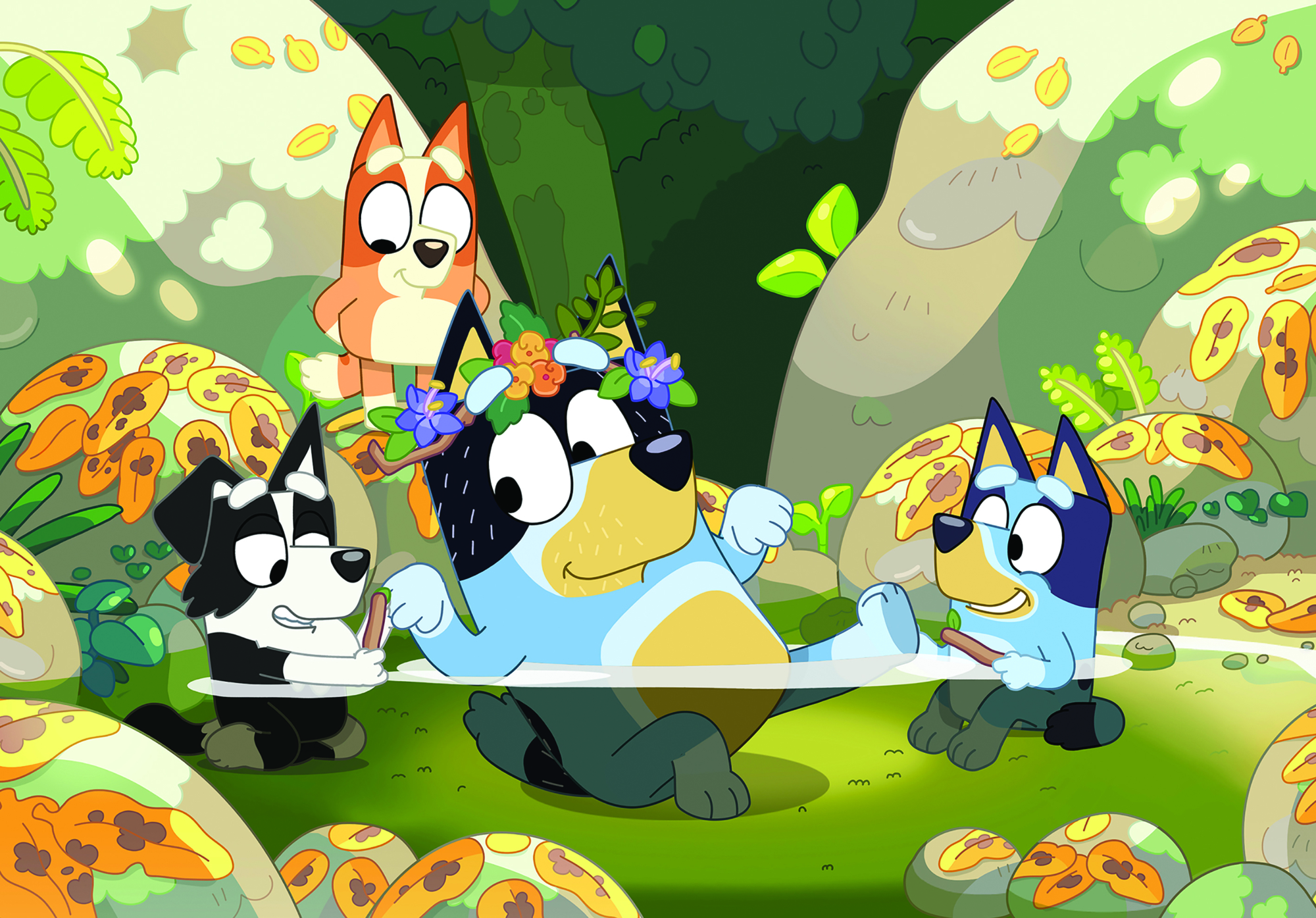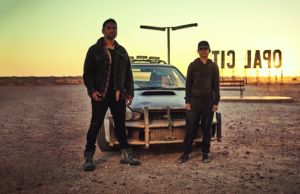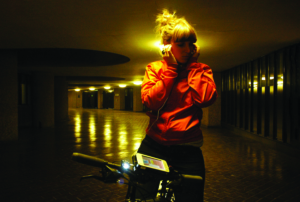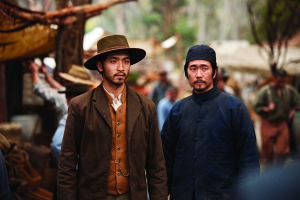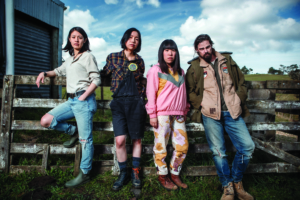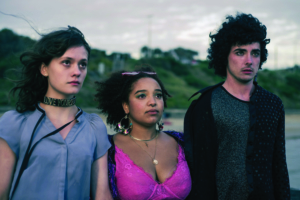‘They forgot the spring rolls!’
Lots of kids’ shows are set around a fantastical premise: there are fruit in human clothing, princess knights, and mutant reptiles who are also teenage ninjas. Kids have short attention spans, so TV programming for them often needs to be big, loud and colourful. Yet the ABC’s Bluey focuses on the modest idiosyncrasies of Australian life – like waiting around for Chinese takeaway – and this animated series about a family of blue and red heelers is now the most watched television series in ABC iview history, having been seen 90 million times[1]Jackie Keast, ‘Ludo Studio’s Bluey Snapped Up by Disney’, IF.com.au, 12 June 2019, <https://www.if.com.au/ludo-studios-bluey-snapped-up-by-disney/>, accessed 31 July 2019. and counting.
Disney, a company famous for a mouse, is so enamoured with the pups that it has announced that the show would air not only on its dedicated broadcast channel for children later this year, but also on its yet-to-be-launched streaming service, Disney+.[2]ibid. With this deal, Bluey’s reach will be more expansive than ever – its view counts growing from millions to likely billions – yet each seven-minute episode begins life at Brisbane’s Ludo Studio. It is even suggested that Bluey and her sister, Bingo,[3]All the ‘child’ characters are voiced by offspring of the show’s production crew, and are uncredited; see ‘Bluey Set to Nuzzle Her Way into the Hearts of Aussie Preschoolers This October’, media release, ABC, 4 September 2018, <https://tv.press.abc.net.au/bluey-set-to-nuzzle-her-way-into-the-hearts-of-aussie-preschoolers-this-october>, accessed 31 July 2019. along with their parents Bandit (Dave McCormack) and Chilli (Melanie Zanetti) – collectively, the Heelers – share a home town with Ludo: the Brisbane city skyline can often be seen from the balcony of their home.
Bluey is hard to define, in the same way that we scratched our heads about Seinfeld – the show about nothing.[4]See, for example, Joe Sommerlad, ‘Seinfeld at 30: The “Show About Nothing” That Was Really About Everything’, The Independent, 5 July 2019, <https://www.independent.co.uk/arts-entertainment/tv/features/seinfeld-30th-anniversary-jerry-george-costanza-elaine-kramer-larry-david-comedy-a8988081.html>, accessed 31 July 2019. I’d argue, though, that the ABC series’ success is grounded in its relatable depictions of modern family life, its incredible sense of place and its beautiful animation style.
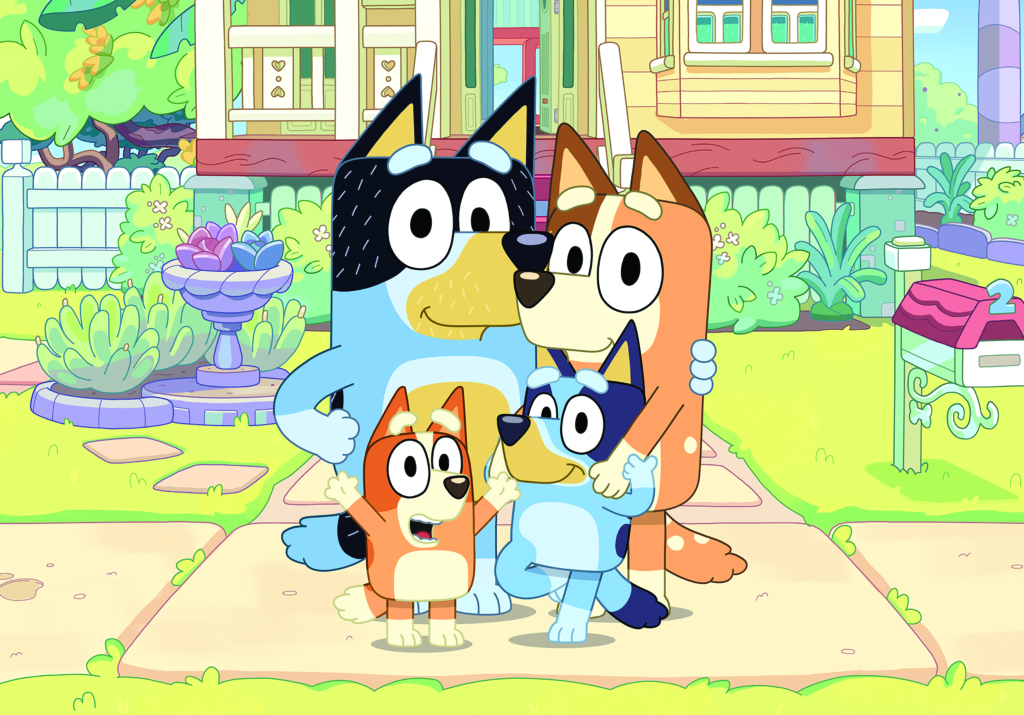
Finding the fun in the mundane
Michael Carrington, at the time the ABC’s head of children’s content, was one of the first to see Bluey’s pilot, which screened at the Asian Animation Summit in 2016. Of that experience, he recalls: ‘We hadn’t seen much Australian animation since Bananas In Pyjamas or Blinky Bill. This pilot was sensational, full of Australian colour and light. I made an immediate approach’.[5]Michael Carrington, quoted in Philippa Chandler, ‘Bluey: How Australia Fell in Love with a Cartoon Blue Heeler Puppy and Her Family’, The Guardian, 21 November 2018, <https://www.theguardian.com/tv-and-radio/2018/nov/21/bluey-how-australia-fell-in-love-with-a-cartoon-blue-heeler-puppy-and-her-family>, accessed 31 July 2019. But the simplicity of Bluey’s premise was initially a hard sell in the hyperactive landscape of kids’ television. Co–executive producer Daley Pearson explains that the show’s pitch wasn’t immediately appealing to television executives because not many understood the concept: ‘[I]t’s not a show about a meteor coming at the Earth, or […] about kids who go out with lasers. It’s just a show about a family and games.’[6]Daley Pearson, in ‘Bluey, the Hit Australian Children’s Cartoon, Is Set to Go Global’, 7.30 Report, ABC, 9 April 2019, transcript available at <https://www.abc.net.au/7.30/bluey,-the-hit-australian-childrens-cartoon,-is/10986524>, accessed 31 July 2019. Indeed, Bluey creator Joe Brumm based the series on his own family and hoped that it would align with ‘what […] kids are seeing at home’.[7]Joe Brumm, quoted in Kellie Scott, ‘Bluey the Cattle Dog Has Won Parents Over – and Their Kids Are Benefiting’, ABC Life, 1 July 2019, <https://www.abc.net.au/life/bluey-the-cattle-dog-has-won-parents-over/10911932>, accessed 31 July 2019.
There’s no better evidence of Bluey’s accessible, minimalist approach than its episode titles: ‘Hospital’, ‘The Weekend’, ‘BBQ’ and ‘The Beach’, among others. Each episode takes a slice of Australian life and views it through the Heeler family’s interactions and the cute world they share with other dogs. Overall, the show finds comfort and playfulness in familiar routines. One episode is built around a game of ‘keepy-uppy’, whose goal is to stop a balloon from touching the ground. In ‘The Creek’, Bluey and Bingo get bored of the playground and Bandit takes them on a hike; the kids hop on rocks, skip stones and encounter local wildlife. In one of the most heartwarming episodes, ‘Camping’, Bluey meets a French labrador, Jean-Luc, while on holiday, and a strong friendship is formed before it’s time to say goodbye (all too soon). Even a visit to the tip to get rid of rubbish gets its own episode, ‘The Dump’.
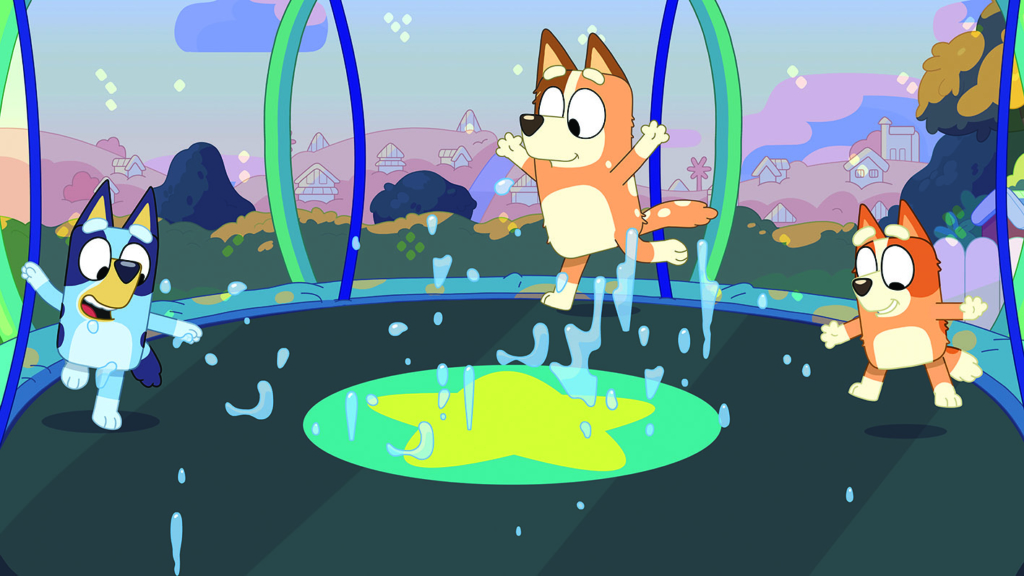
McCormack muses that voicing Bandit is often a surreal experience for him because of the show’s uncannily on-the-mark depiction of fathers:
The dad takes the kids to somebody’s pool, but in that sort of laissez-faire dad way, forgets to bring all the important things, like sunscreen and flotation devices and thongs to wear on the hot concrete and towels and all that sort of stuff.
And then the mum turns up and saves the day [… which is] pretty accurate for my life. My wife is like, do you tell them what’s going on? It’s pretty much like they’ve peered into my life and written it. But it’s universal, right?[8]Dave McCormack, quoted in Andrew Stafford, ‘Custard’s Dave McCormack on Voicing Bluey’s Dad: “I’m Popular at School Drop-off Time”’, The Guardian, 16 May 2019, <https://www.theguardian.com/tv-and-radio/2019/may/16/custards-dave-mccormack-on-voicing-blueys-dad-im-popular-at-school-drop-off-time>, accessed 31 July 2019.
The games featured in most episodes are tributes to the imagination of parents that takes flight in the company of children. Games aren’t just important to create a sense of playfulness in kids, but also a way for parents to survive the day and make dull tasks fun.
Parenting can be ruff
Life as a parent is certainly full of routine and repetition, but children can also be chaotic and impulsive. The series builds on this duality, drawing from the lives of the parents who work on the show. ‘When kids are at the top end of preschool they experience the world for themselves through unstructured play,’ says Bluey producer and co–executive producer Charlie Aspinwall.
It’s one of the most fun times to be a dad. You might be having breakfast and your youngest will be pretending to be a frog. Yet somehow you need to get the ‘frog’ out of the door in the next half hour. There’s so much comedy in how parents deal with difficult situations.[9]Charlie Aspinwall, quoted in Chandler, op. cit.
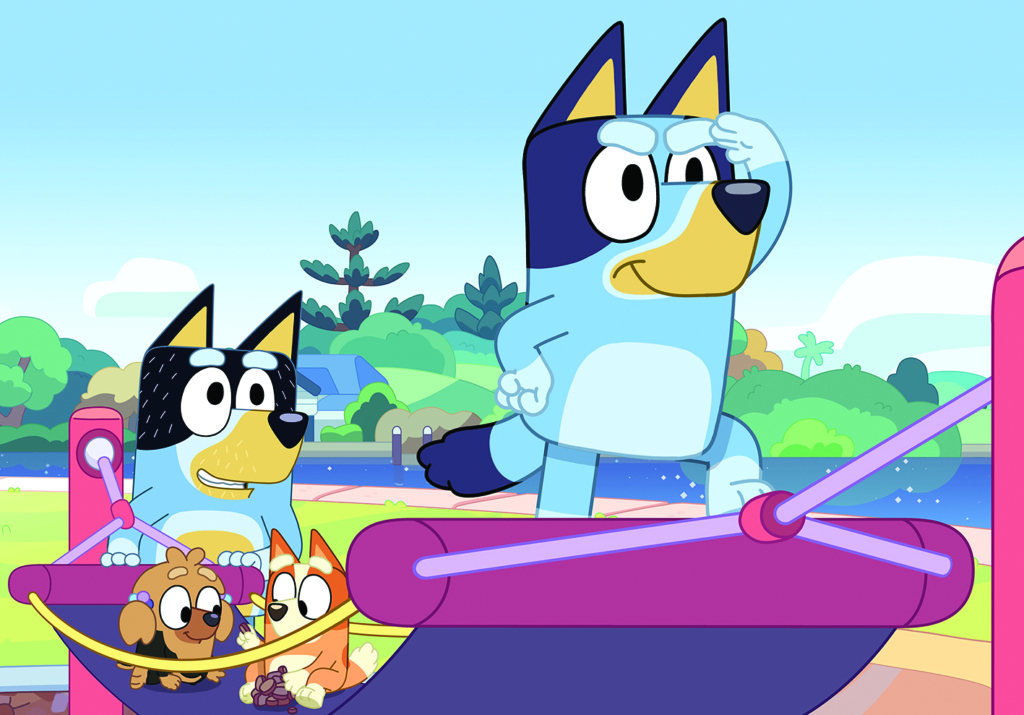
A childhood is built, in no small part, around experiences of loose improvisation by parents and relatives, and depictions of these have proven vital to the charm of Bluey. While innumerable books have been written to help parents make sense of their offspring, a sobering realisation the series reminds viewers of is that most parents are making it up as they go. The games featured in most episodes are tributes to the imagination of parents that takes flight in the company of children. Games aren’t just important to create a sense of playfulness in kids, but also a way for parents to survive the day and make dull tasks fun. In ‘Takeaway’, we see Bandit consistently saying ‘no’ to his kids as they fool around while waiting for their food order, but the children can’t resist playing. After some moments of mischief, a brief dose of Zen delivered by a fortune cookie reminds the frazzled dad of the joys of being a kid – and he joins his girls in their merriment. This episode captures how easy it is for parents to become strict and cynical when they’re going through their daily motions.
In another episode, ‘The Sleepover’, the Heeler girls get a visit from their cousin Muffin, who has skipped her daytime nap. The kids don’t understand why this is bad news – they are simply excited to stay up late with their cousin – but Muffin’s dad says goodbye and runs out the door, teeth gritted, as though a bomb is about to explode. Any parent knows the fear summoned by a child who has missed their daytime nap. And, as it progresses, the episode indeed shows us an overtired Muffin causing havoc as she and the kids play a game of ‘restaurant’. Adult viewers can laugh at the hazards of an exhausted child while kids can find amusement in Muffin’s sleep-deprived antics.
Bluey is full of tender, familiar moments such as these, which raise it above the simplistic label of ‘kids’ cartoon’. And it’s this cross-generational appeal that is key to the series’ success. Ludo’s work recalls that of the animation studio – and Disney stablemate – Pixar in the way it balances humour that adults can appreciate with the delight that’s inextricable from childhood.
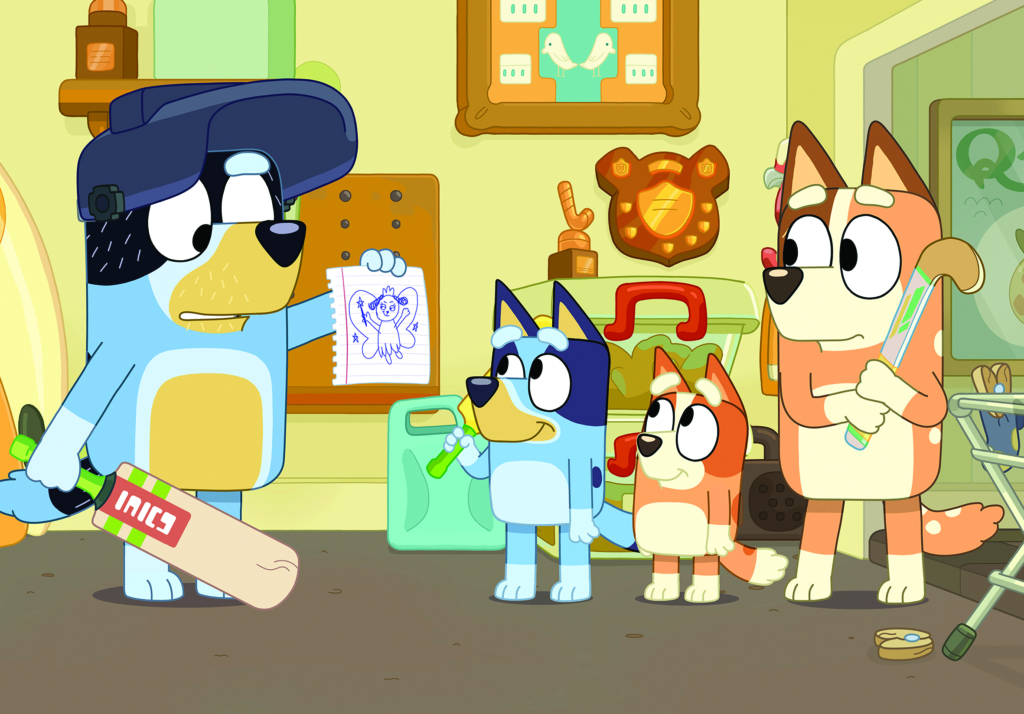
The Australian backyard on screen
If you flip through the streaming services and television channels available in Australia, it can be difficult to get a sense of place based on what you see. Shows from the US and the UK dominate. While Australia’s commercial broadcasters did exceed their quotas for local content last year,[10]David Knox, ‘Networks Exceeded Local Content Quotas in 2018’, TV Tonight, 31 May 2019, <https://tvtonight.com.au/2019/05/networks-exceed-local-content-quotas-in-2018.html>, accessed 31 July 2019. the small-screen audience is fragmenting: according to a 2019 study by AMPD Research, over half of Australia’s adults are paying for subscription video-on-demand (SVOD) services, with 42 per cent of SVOD revenue going to Netflix.[11]‘SVOD Market in Australia Rockets to 10.2 Million Paying Subscribers’, IF.com.au, 17 June 2019, <https://www.if.com.au/svod-market-in-australia-rockets-to-10-2-million-paying-subscribers>, accessed 31 July 2019. But research by RMIT University found that, as of 2018, local content made up only 1.6 per cent of Netflix’s Australian catalogue.[12]Ramon Lobato & Alexa Scarlata, Australian Content in SVOD Catalogs: Availability and Discoverability, RMIT University, Melbourne, 2018, p. 2, available at <https://apo.org.au/node/196611>, accessed 31 July 2019.
In industry and viewing terms, Bluey is a balm against the prevalence of these overseas imports, especially considering it’s available to stream for free on ABC iview. More importantly, the show is full of Australiana: jacaranda petals lie on the Heelers’ patio, fruit bats fly over their house at dusk and a family barbecue becomes a battle for attention between sausages and salad. Moreover, the animation style lends itself to portraying the beauty of the Australian landscape: stunning pink sunsets burst from behind puffy clouds, the blue ocean froths with specks of white to represent waves breaking and the distinct shapes of gum-tree leaves stand out in surrounding bushlands. Even the sight of a sausage dog in a flap hat conjures a stronger sense of Australian identity than a mega-budget tourism campaign.
The show is full of Australiana: jacaranda petals lie on the Heelers’ patio, fruit bats fly over their house at dusk and a family barbecue becomes a battle for attention between sausages and salad. Moreover, the animation style lends itself to portraying the beauty of the Australian landscape.
There’s been so much hype around Bluey that it’s easy to forget the show is only a year old. And more is on the way for the franchise: a series of books is set for release in time for Christmas 2019,[13]Hannah Blackiston, ‘ABC’s Bluey Renewed for Second Season After BVOD and International Success’, Mumbrella, 16 May 2019, <https://mumbrella.com.au/abcs-bluey-renewed-for-second-season-after-bvod-and-international-success-579917>, accessed 31 July 2019. and toys will no doubt arrive next. We’re on the cusp of a Bluey phenomenon, which will put the series among the ranks of Peppa Pig, PAW Patrol and SpongeBob Squarepants.
While Bluey is a huge victory for the Australian screen industries, it does also highlight the poor state of the production of local kids’ television. According to research from the University of the Sunshine Coast, live-action kids’ television is slowly being replaced by animation with no clear sense of place. Often, animation is used by Australian networks to easily meet their quota for children’s programming – thirty-two hours of new Australian content each year – because such series are classified as ‘drama’. As an added bonus, not only is animation cheaper to make than live action, but it can also draw huge overseas investors, and can be easily revoiced and sold to international markets.[14]Anna Potter & Huw Walmsley-Evans, ‘The Slow Death of Australian Children’s TV Drama’, The Conversation, 27 April 2017, <https://theconversation.com/the-slow-death-of-australian-childrens-tv-drama-75394>, accessed 31 July 2019. Thankfully, in the case of Bluey, its creators fought hard with overseas distributors to keep the show’s Australian accents, despite the normal practice of dubbing voices in animated series.[15]Peter McCutcheon, ‘Bluey, the Hit Australian Children’s Cartoon, Is Set to Go Global – but Only with Aussie Accents Intact’, ABC News, 9 April 2019, <https://www.abc.net.au/news/2019-04-09/bluey-set-to-go-global-but-only-with-australian-accents-intact/10968268>, accessed 31 July 2019.
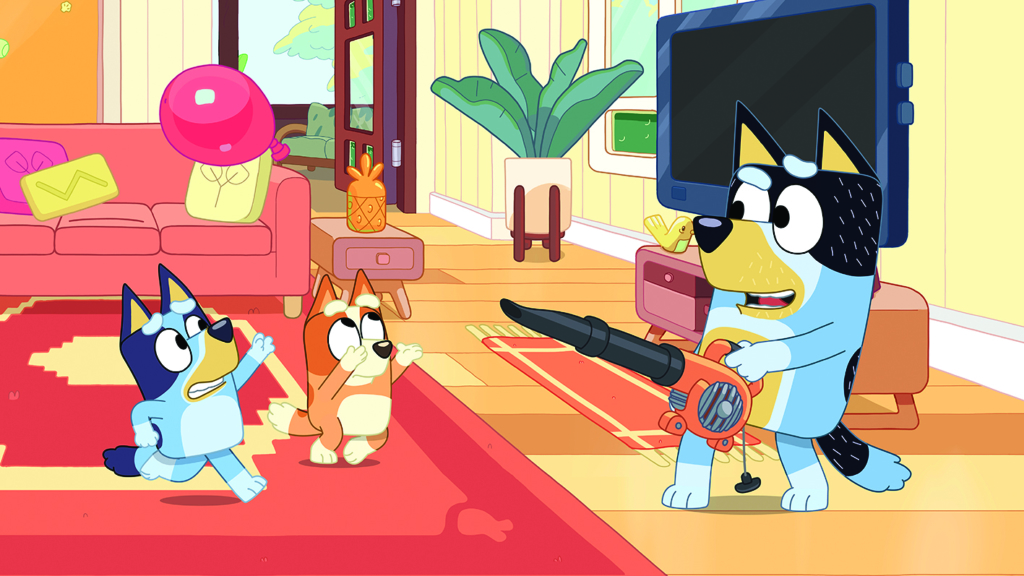
Amid all of these developments, the hard truth is that Bluey is part of Australia’s broader animation problem. The success of the show is great for Ludo, and work on a second season is already underway for a 2020 release,[16]Blackiston, op. cit. but it will do little to change the screen sector’s overreliance on animation to meet quotas. Australian Children’s Television Foundation CEO Jenny Buckland suggests that Bluey’s trajectory won’t necessarily trigger more funding for kids’ television. ‘The commercial broadcasters certainly won’t invest any more [in new work] as a result of Bluey’s success,’ she says.
They will argue that it just goes to show that we should leave kids’ content up to the ABC. The ABC and Screen Australia will definitely invest in more Bluey [itself], but I don’t think either of them will decide to invest more of their overall budgets in children’s content […] They will more likely point to Bluey’s success as an example of the great job they’re already doing.[17]Jenny Buckland, email interview with author, 8 February 2019.
Bluey will travel far, and it will take a little piece of Australia with it wherever it goes. It’s an ambassador not only for our culture, but also our creative capacity: an animated series made in Australia can have a global reach without compromising its identity, how it’s made or where it’s made. The show has set an incredible precedent, and it should be a wake-up call in the industry for more funding for Australian-made kids’ television – both animated and live-action. Bluey is an incredible achievement and it shouldn’t be a lone wolf.
https://www.abc.net.au/tv/programs/bluey/
Endnotes
| 1 | Jackie Keast, ‘Ludo Studio’s Bluey Snapped Up by Disney’, IF.com.au, 12 June 2019, <https://www.if.com.au/ludo-studios-bluey-snapped-up-by-disney/>, accessed 31 July 2019. |
|---|---|
| 2 | ibid. |
| 3 | All the ‘child’ characters are voiced by offspring of the show’s production crew, and are uncredited; see ‘Bluey Set to Nuzzle Her Way into the Hearts of Aussie Preschoolers This October’, media release, ABC, 4 September 2018, <https://tv.press.abc.net.au/bluey-set-to-nuzzle-her-way-into-the-hearts-of-aussie-preschoolers-this-october>, accessed 31 July 2019. |
| 4 | See, for example, Joe Sommerlad, ‘Seinfeld at 30: The “Show About Nothing” That Was Really About Everything’, The Independent, 5 July 2019, <https://www.independent.co.uk/arts-entertainment/tv/features/seinfeld-30th-anniversary-jerry-george-costanza-elaine-kramer-larry-david-comedy-a8988081.html>, accessed 31 July 2019. |
| 5 | Michael Carrington, quoted in Philippa Chandler, ‘Bluey: How Australia Fell in Love with a Cartoon Blue Heeler Puppy and Her Family’, The Guardian, 21 November 2018, <https://www.theguardian.com/tv-and-radio/2018/nov/21/bluey-how-australia-fell-in-love-with-a-cartoon-blue-heeler-puppy-and-her-family>, accessed 31 July 2019. |
| 6 | Daley Pearson, in ‘Bluey, the Hit Australian Children’s Cartoon, Is Set to Go Global’, 7.30 Report, ABC, 9 April 2019, transcript available at <https://www.abc.net.au/7.30/bluey,-the-hit-australian-childrens-cartoon,-is/10986524>, accessed 31 July 2019. |
| 7 | Joe Brumm, quoted in Kellie Scott, ‘Bluey the Cattle Dog Has Won Parents Over – and Their Kids Are Benefiting’, ABC Life, 1 July 2019, <https://www.abc.net.au/life/bluey-the-cattle-dog-has-won-parents-over/10911932>, accessed 31 July 2019. |
| 8 | Dave McCormack, quoted in Andrew Stafford, ‘Custard’s Dave McCormack on Voicing Bluey’s Dad: “I’m Popular at School Drop-off Time”’, The Guardian, 16 May 2019, <https://www.theguardian.com/tv-and-radio/2019/may/16/custards-dave-mccormack-on-voicing-blueys-dad-im-popular-at-school-drop-off-time>, accessed 31 July 2019. |
| 9 | Charlie Aspinwall, quoted in Chandler, op. cit. |
| 10 | David Knox, ‘Networks Exceeded Local Content Quotas in 2018’, TV Tonight, 31 May 2019, <https://tvtonight.com.au/2019/05/networks-exceed-local-content-quotas-in-2018.html>, accessed 31 July 2019. |
| 11 | ‘SVOD Market in Australia Rockets to 10.2 Million Paying Subscribers’, IF.com.au, 17 June 2019, <https://www.if.com.au/svod-market-in-australia-rockets-to-10-2-million-paying-subscribers>, accessed 31 July 2019. |
| 12 | Ramon Lobato & Alexa Scarlata, Australian Content in SVOD Catalogs: Availability and Discoverability, RMIT University, Melbourne, 2018, p. 2, available at <https://apo.org.au/node/196611>, accessed 31 July 2019. |
| 13 | Hannah Blackiston, ‘ABC’s Bluey Renewed for Second Season After BVOD and International Success’, Mumbrella, 16 May 2019, <https://mumbrella.com.au/abcs-bluey-renewed-for-second-season-after-bvod-and-international-success-579917>, accessed 31 July 2019. |
| 14 | Anna Potter & Huw Walmsley-Evans, ‘The Slow Death of Australian Children’s TV Drama’, The Conversation, 27 April 2017, <https://theconversation.com/the-slow-death-of-australian-childrens-tv-drama-75394>, accessed 31 July 2019. |
| 15 | Peter McCutcheon, ‘Bluey, the Hit Australian Children’s Cartoon, Is Set to Go Global – but Only with Aussie Accents Intact’, ABC News, 9 April 2019, <https://www.abc.net.au/news/2019-04-09/bluey-set-to-go-global-but-only-with-australian-accents-intact/10968268>, accessed 31 July 2019. |
| 16 | Blackiston, op. cit. |
| 17 | Jenny Buckland, email interview with author, 8 February 2019. |
